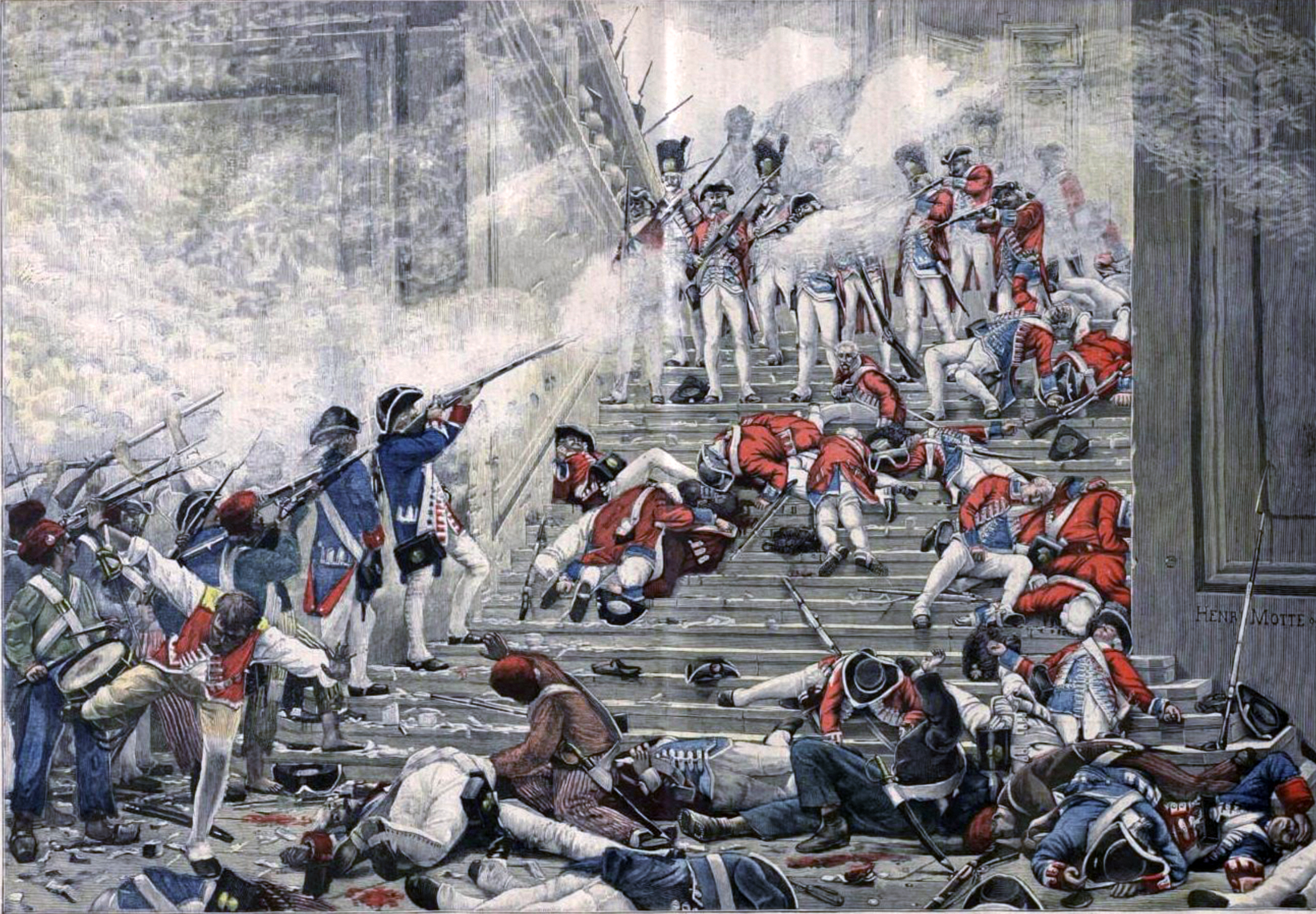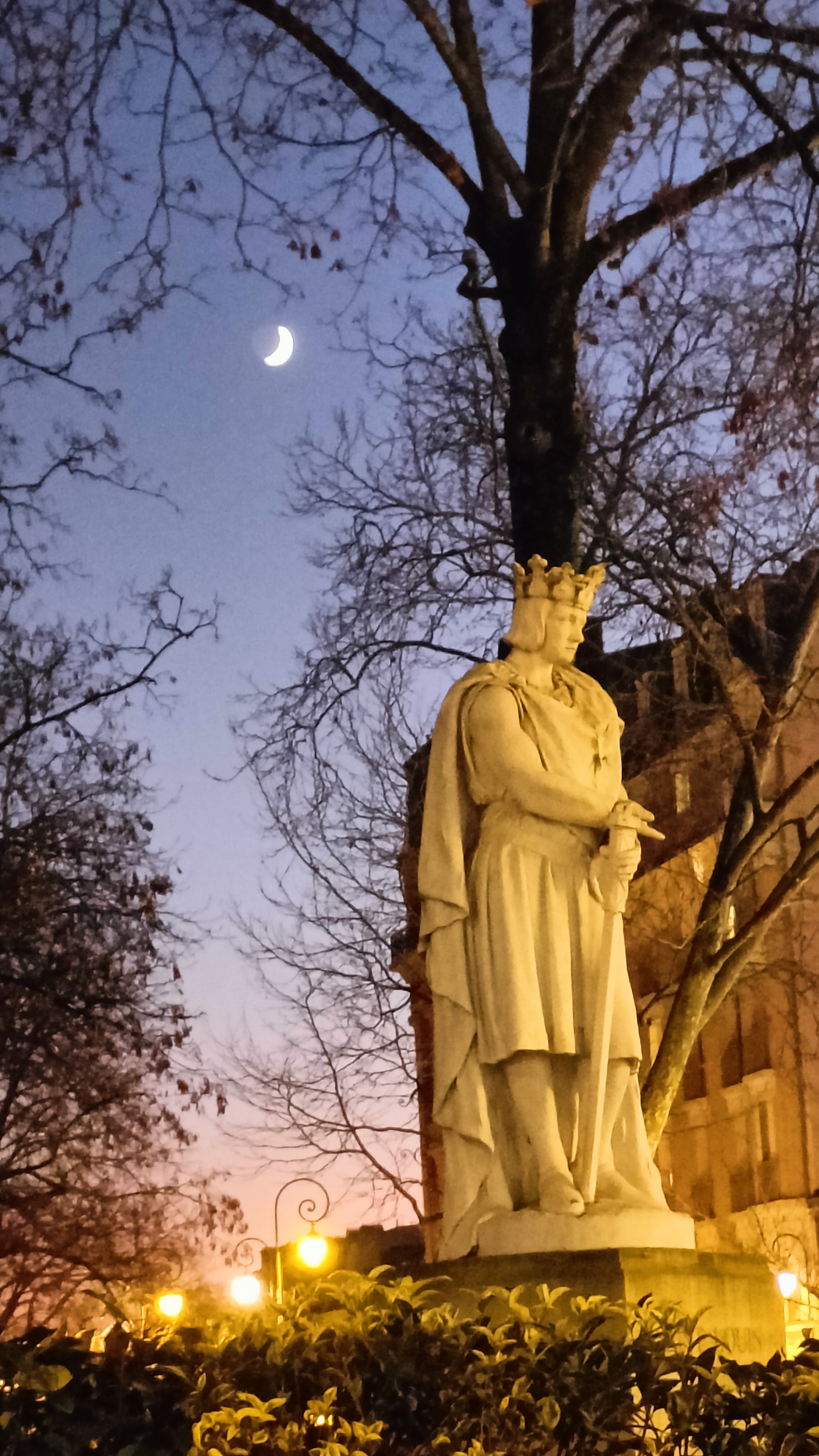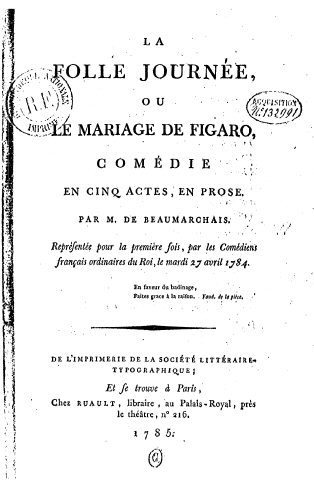|
Louis Joseph D'Albert D'Ailly
Louis Joseph d'Albert, 6th Duke of Chaulnes (1741–1792), sixth Duke of Chaulnes and son of Michel Ferdinand d'Albert d'Ailly, was a chemist and French aristocrat. Biography At the death of his father in 1769, Louis Joseph inherited the title of Duke of Picquigny. He studied science successfully and in 1764 was elected a Fellow of the Royal Society in London. He retired from military service at the age of twenty-four with the simple rank of colonel and instead undertook the study of natural sciences. In 1775, he proved that the poisonous air produced in the brewing process was carbon dioxide, and demonstrated a method of easily preparing acidic water with instruments with which water was shaken above vats where beer was fermenting. He showed a method of extracting and purifying salts from urine. In 1773, he found a way to crystallize alkalis by saturating carbon dioxide over a vat of beer. Chemists at the time recognised that asphyxiation from coal fumes is due to the for ... [...More Info...] [...Related Items...] OR: [Wikipedia] [Google] [Baidu] |
Duke Of Chaulnes
The title of Duke of Chaulnes (), a French peerage, is held by the d'Albert family beginning in 1621. History First creation (1621–1698) The duchy of Chaulnes was established by letters patent in January 1621 and registered on 6 March 1621 at the Parlement of Paris for the benefit of Honoré d'Albert (1581-1649), Honoré d'Albert (1581–1649), Marshal of France in 1619, known as the Marshal de Cadenet, a younger brother of Charles d'Albert, duc de Luynes, Charles d'Albert, Duke of Luynes (1578–1621). Honoré d'Albert had married Charlotte Eugénie d'Ailly on 14 January 1620. She was heir to a family holding the titles of Count of Chaulnes (created in December 1563), Vidame d'Amiens and Baron de Picquigny. The marriage contract stipulated that their heirs would take the name and arms of Ailly, Eure, Ailly. The first Duke of Chaulnes had three sons, all of whom took the surname of d'Albert d'Ailly. Of the three sons, only the eldest son Henri-Louis married, but only sired gi ... [...More Info...] [...Related Items...] OR: [Wikipedia] [Google] [Baidu] |
Valet
A valet or varlet is a male servant who serves as personal attendant to his employer. In the Middle Ages and Ancien Régime, ''valet de chambre'' was a role for junior courtiers and specialists such as artists in a royal court, but the term "valet" by itself most often refers to a normal servant responsible for the clothes and personal belongings of an employer, and making minor arrangements. In the United States, the term most often refers to a parking valet, and the role is often confused with a butler. Word origins In English, ''valet'' as "personal man-servant" is recorded since 1567, though use of the term in the French-speaking English medieval court is older, and the variant form ''varlet'' is cited from 1456 ( OED). Both are French importations of ''valet'' or ''varlet'' (the "t" being silent in modern French), Old French variants of ''vaslet'' "man's servant", originally "squire, young man", assumed to be from Gallo-Romance Vulgar Latin *''vassellittus'' "young noble ... [...More Info...] [...Related Items...] OR: [Wikipedia] [Google] [Baidu] |
Fellows Of The Royal Society
Fellowship of the Royal Society (FRS, ForMemRS and HonFRS) is an award granted by the Fellows of the Royal Society of London to individuals who have made a "substantial contribution to the improvement of natural science, natural knowledge, including mathematics, engineering science, and medical science". Overview Fellowship of the Society, the oldest known scientific academy in continuous existence, is a significant honour. It has been awarded to :Fellows of the Royal Society, around 8,000 fellows, including eminent scientists Isaac Newton (1672), Benjamin Franklin (1756), Charles Babbage (1816), Michael Faraday (1824), Charles Darwin (1839), Ernest Rutherford (1903), Srinivasa Ramanujan (1918), Jagadish Chandra Bose (1920), Albert Einstein (1921), Paul Dirac (1930), Subrahmanyan Chandrasekhar (1944), Prasanta Chandra Mahalanobis (1945), Dorothy Hodgkin (1947), Alan Turing (1951), Lise Meitner (1955), Satyendra Nath Bose (1958), and Francis Crick (1959). More recently, fellow ... [...More Info...] [...Related Items...] OR: [Wikipedia] [Google] [Baidu] |
18th-century French Chemists
The 18th century lasted from 1 January 1701 (represented by the Roman numerals MDCCI) to 31 December 1800 (MDCCC). During the 18th century, elements of Enlightenment thinking culminated in the Atlantic Revolutions. Revolutions began to challenge the legitimacy of monarchical and aristocratic power structures. The Industrial Revolution began mid-century, leading to radical changes in human society and the environment. The European colonization of the Americas and other parts of the world intensified and associated mass migrations of people grew in size as part of the Age of Sail. During the century, slave trading expanded across the shores of the Atlantic Ocean, while declining in Russia and China. Western historians have occasionally defined the 18th century otherwise for the purposes of their work. For example, the "short" 18th century may be defined as 1715–1789, denoting the period of time between the death of Louis XIV of France and the start of the French Revolut ... [...More Info...] [...Related Items...] OR: [Wikipedia] [Google] [Baidu] |
1741 Births
Events January–March * January 13 **Lanesborough, Massachusetts is created as a township. **Conventicle Act (Denmark–Norway), Conventicle Act of 1741 is introduced in Denmark-Norway. *February 13 – Sir Robert Walpole, the Prime Minister of Great Britain, popularizes the term "the balance of power (international relations), balance of power" in a speech in Parliament. *February 14 – Irish-born actor Charles Macklin makes his London stage debut as Shylock in ''The Merchant of Venice'' at the Theatre Royal, Drury Lane, pioneering a psychologically realistic style with Shakespeare's text revived, replacing George Granville, 1st Baron Lansdowne, George Granville's melodramatic adaptation The Merchant of Venice#Performance history, ''The Jew of Venice''. Kitty Clive plays the Travesti (theatre), travesti role of Portia (The Merchant of Venice), Portia. *March 9 – War of the Austrian Succession: Prussian troops bring down the Austrian fortress of Głog� ... [...More Info...] [...Related Items...] OR: [Wikipedia] [Google] [Baidu] |
1792 Deaths
Events January–March * January 9 – The Treaty of Jassy ends the Russian Empire's war with the Ottoman Empire over Crimea. * January 25 – The London Corresponding Society is founded. * February 18 – Thomas Holcroft produces the comedy ''The Road to Ruin (play), The Road to Ruin'' in London. * February 20 ** The Postal Service Act, establishing the United States Postal Service, United States Post Office Department, is signed by President George Washington.''Harper's Encyclopaedia of United States History from 458 A. D. to 1909'', ed. by Benson John Lossing and, Woodrow Wilson (Harper & Brothers, 1910) p169 ** Parliament House, Dublin catches fire during a legislative session. "Although in imminent danger of the roof falling in," it is noted later, "the House did not adjourn until a proper motion had been put and carried in the affirmative.""Fires, Great", in ''The Insurance Cyclopeadia: Being an Historical Treasury of Events and Circumstances Connect ... [...More Info...] [...Related Items...] OR: [Wikipedia] [Google] [Baidu] |
Dukes Of Chaulnes
The title of Duke of Chaulnes (), a French peerage, is held by the d'Albert family beginning in 1621. History First creation (1621–1698) The duchy of Chaulnes was established by letters patent in January 1621 and registered on 6 March 1621 at the Parlement of Paris for the benefit of Honoré d'Albert (1581–1649), Marshal of France in 1619, known as the Marshal de Cadenet, a younger brother of Charles d'Albert, Duke of Luynes (1578–1621). Honoré d'Albert had married Charlotte Eugénie d'Ailly on 14 January 1620. She was heir to a family holding the titles of Count of Chaulnes (created in December 1563), Vidame d'Amiens and Baron de Picquigny. The marriage contract stipulated that their heirs would take the name and arms of Ailly. The first Duke of Chaulnes had three sons, all of whom took the surname of d'Albert d'Ailly. Of the three sons, only the eldest son Henri-Louis married, but only sired girls. Upon the first Duke's death in 1649, Henri-Louis became the second ... [...More Info...] [...Related Items...] OR: [Wikipedia] [Google] [Baidu] |
Château De Vincennes
The Château de Vincennes () is a former fortress and royal residence next to the town of Vincennes, on the eastern edge of Paris, alongside the Bois de Vincennes. It was largely built between 1361 and 1369, and was a preferred residence, after the Palais de la Cité, of French kings in the 14th to 16th century. It is particularly known for its "donjon" or keep, a fortified central tower, the tallest in Europe, built in the 14th century, and for the chapel, Sainte-Chapelle de Vincennes, begun in 1379 but not completed until 1552, which is an exceptional example of Flamboyant Gothic architecture. Because of its fortifications, the château was often used as a royal sanctuary in times of trouble, and later as a prison and military headquarters. The chapel was listed as an historic monument in 1853, and the keep was listed in 1913. Most of the building is now open to the public. History 12th–14th century – Louis VII to Saint Louis The first royal residence was created by an ... [...More Info...] [...Related Items...] OR: [Wikipedia] [Google] [Baidu] |
Beaumarchais
Pierre-Augustin Caron de Beaumarchais (; 24 January 1732 – 18 May 1799) was a French playwright and diplomat during the Age of Enlightenment. Best known for his three Figaro plays, at various times in his life he was also a watchmaker, inventor, musician, spy, publisher, arms dealer, and revolutionary (both French and American). Born a Parisian watchmaker's son, Beaumarchais rose in French society and became influential in the court of Louis XV as an inventor and music teacher. He made a number of important business and social contacts, played various roles as a diplomat and spy, and had earned a considerable fortune before a series of costly court battles jeopardized his reputation. An early French supporter of American independence, Beaumarchais lobbied the French government on behalf of the American rebels during the American War of Independence. Beaumarchais oversaw covert aid from the French and Spanish governments to supply arms and financial assistance to the rebels i ... [...More Info...] [...Related Items...] OR: [Wikipedia] [Google] [Baidu] |
Hieroglyphs
Ancient Egyptian hieroglyphs ( ) were the formal writing system used in Ancient Egypt for writing the Egyptian language. Hieroglyphs combined ideographic, logographic, syllabic and alphabetic elements, with more than 1,000 distinct characters.In total, there were about 1,000 graphemes in use during the Old Kingdom period; this number decreased to 750–850 during the Middle Kingdom, but rose instead to around 5,000 signs during the Ptolemaic period. Antonio Loprieno, ''Ancient Egyptian: A Linguistic Introduction'' (Cambridge: Cambridge UP, 1995), p. 12. Cursive hieroglyphs were used for religious literature on papyrus and wood. The later hieratic and demotic Egyptian scripts were derived from hieroglyphic writing, as was the Proto-Sinaitic script that later evolved into the Phoenician alphabet. Egyptian hieroglyphs are the ultimate ancestor of the Phoenician alphabet, the first widely adopted phonetic writing system. Moreover, owing in large part to the Greek and Aramaic scripts ... [...More Info...] [...Related Items...] OR: [Wikipedia] [Google] [Baidu] |
Ammonia
Ammonia is an inorganic chemical compound of nitrogen and hydrogen with the chemical formula, formula . A Binary compounds of hydrogen, stable binary hydride and the simplest pnictogen hydride, ammonia is a colourless gas with a distinctive pungent smell. It is widely used in fertilizers, refrigerants, explosives, cleaning agents, and is a precursor for numeous chemicals. Biologically, it is a common nitrogenous waste, and it contributes significantly to the nutritional needs of terrestrial organisms by serving as a precursor to fertilisers. Around 70% of ammonia produced industrially is used to make fertilisers in various forms and composition, such as urea and diammonium phosphate. Ammonia in pure form is also applied directly into the soil. Ammonia, either directly or indirectly, is also a building block for the synthesis of many chemicals. In many countries, it is classified as an List of extremely hazardous substances, extremely hazardous substance. Ammonia is toxic, cau ... [...More Info...] [...Related Items...] OR: [Wikipedia] [Google] [Baidu] |






